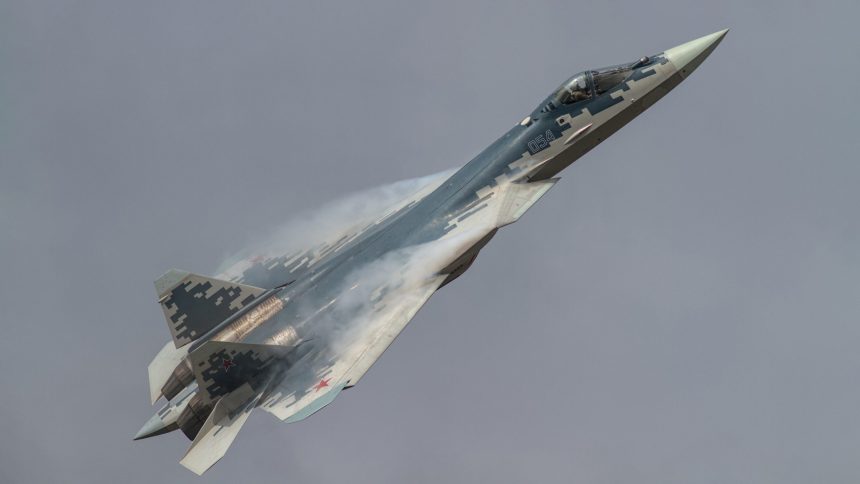The J-35A, Su-57 and many Flanker variants were all on the menu for this year’s China International Aviation & Aerospace Exhibition in Zhuhai.
The 2024 China International Aviation & Aerospace Exhibition, known more commonly as China Airshow or Zhuhai Airshow, took place last week from Nov. 12 to 17, 2024, in Zhuhai, a city in the Guangdong province. The biennial event gathered aviation enthusiasts from around the globe. According to CCTV military news, nearly 600,000 people visited the airshow, and the total contracts signed were over 280 billion yuan.
Spectators were presented with a four-hour long flight performance, featuring the Russian Air Force (VKS), the People’s Liberation Army’s Army (PLA), Navy (PLAN) and Air Force (PLAAF), and the Commercial Aircraft Corporation of China (COMAC), as well as an extensive ground display featuring the PLA’s equipment.
As the only international airshow that takes place in mainland China, Zhuhai Airshow is one of the major events which the PLA uses to publicize its new equipment. This year, the PLA revealed many new aircraft and defense systems to the public for the first time. These included the PLAAF’s brand-new J-35A medium-sized stealth fighter, the PLAN’s new Catapult Assisted Take Off But Arrested Landing (CATOBAR) compatible J-15T, and the PLA’s Anti-Ballistic Missile Interceptor HQ-19.
J-35A
The definitive highlight of this year’s show was the unveiling of the J-35A. Marketed as a medium-sized multirole stealth fighter by the Aviation Industry Corporation of China (AVIC), the fighter’s short flight over the show center consisted of a single flyby with afterburner, followed by an unrestricted climb to exit. The induction of the J-35A into the PLAAF inventory makes China the second nation, after the US, to field two operational stealth fighters. At least three different airframes have flown over Zhuhai.
The new fighter didn’t come as a complete surprise. Initially developed as Shenyang Aircraft Corporation (SAC)’s private venture, the first version of the fighter actually debuted 10 years ago at the very same Zhuhai Airshow. At that time, it was known as the FC-31(V1). It was thought that the PLA didn’t express interest in the project due to its interest in the Chengdu Aircraft Corporation’s J-20 program. However, the company pursued the project and it evolved into the FC-31(V2) by Dec. 2016. By 2018, rumors of the PLAN being interested in the program. Further prototyping followed, and photos of the Naval variant of the fighter, the J-35, emerged after it conducted its first flight in Oct. 2021. The land variant emerged in Sep. 2023.
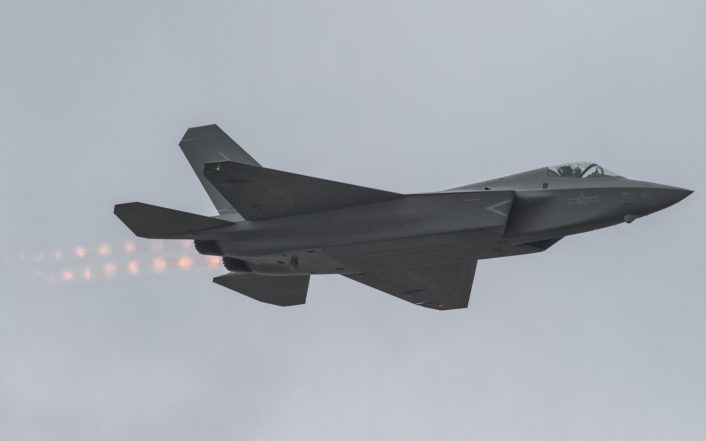
The revealing of the J-35A in the PLAAF inventory signifies that the PLA is now confident enough in their technology to run two 5th generation fighters at the same time, especially as the PLA was not initially interested in SAC’s prototype, instead focusing on the J-20.
Su-57
The J-35A wasn’t the only 5th generation fighter present at the show. The 4th prototype of Russia’s Su-57, the T-50-4 “054 Blue”, flew 8-minute demos everyday as well. It was fittingly flown by Sergey Bogdan, Hero of Russia, also touted as Russia’s best test pilot, who also flew the Su-35 at the same airshow in 2018. The demo consisted of many challenging maneuvers, including Pugachev’s Cobra and the falling leaf maneuver, leaving the crowd in awe of the Sukhoi’s physics-defying agility. The display was intense, and Bogdan was treated with audible applause as he touched down on the runway.
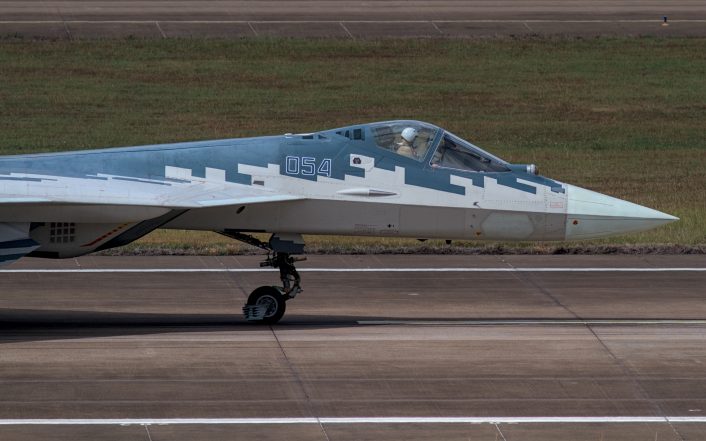
The Su-57 was also present on the ground for the public to see up close. The airframe displayed was T-50-7, “057 Blue”. It was brought to the show center in an An-124 as 057 is a static test airframe, meaning it is unable to take flight. Spectators were able to take a look at the airframe alongside some of the weapons designed for the plane. Furthermore, the side weapon bays of the Su-57, which has not been publicly seen before, were circulated online for the first time when people photographed it during the unloading of 057 Blue.
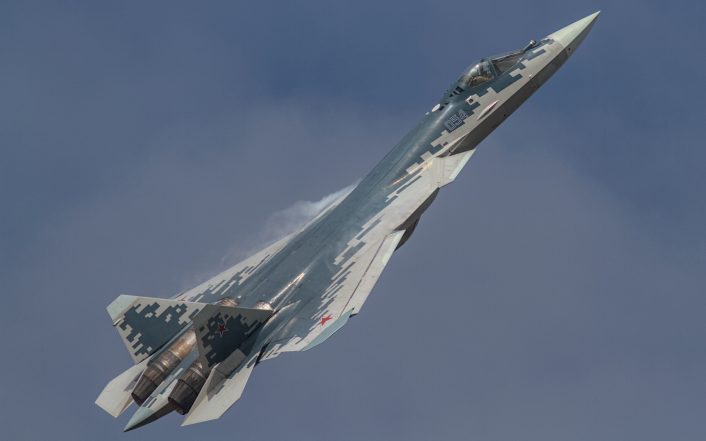
It was not all good news for the Su-57 however; netizens criticized the poor craftsmanship of 054, as there were mismatched panels and visible screw tops on the fuselage of the aircraft when viewed up-close.
J-20
The participation of the J-35A, Su-57 and J-20 made this edition of the China Airshow the first in the world to have three different stealth fighter designs. As China’s first stealth fighter, the J-20 was extremely popular among the audience and is affectionately referred to as the 8-winged hero by the Chinese.
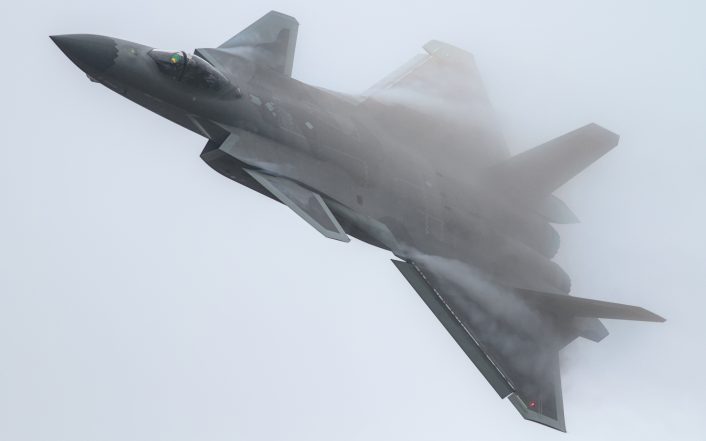
A total of four J-20s performed a 10-minute-long flight over the show center, starting with two four-ship formation pass before splitting into a pair and performing formation breaks, and ear-shattering maneuvers in afterburner, before two of the four aircraft landed at Zhuhai Airport, deploying drag chutes and taxiing in. They left the airport in tandem takeoff at the end of the flying display.
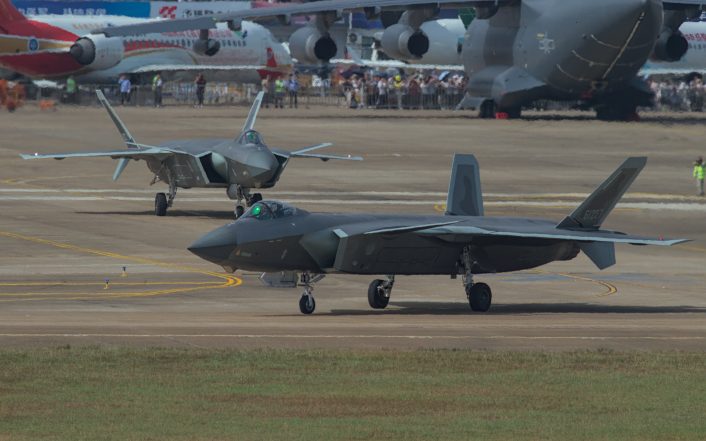
While it wasn’t an actual flying airframe, a mockup of the two-seat J-20S was unveiled in the exhibition hall. The aircraft is the world’s first two-seat stealth fighter and first broke cover in 2021.
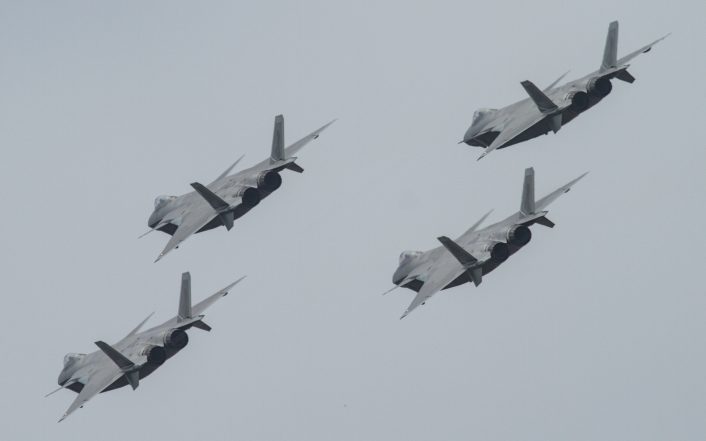
Flanker Frenzy
This year’s China Airshow featured an extensive list of aircraft from the Flanker Family, with six types of advanced variants of the Su-27 taking center stage. Originally designed by the Soviet Union’s Sukhoi Design Bureau, the Flanker has evolved in China’s aviation industry into a highly specialized version. The presence of these Flankers demonstrated the role that they still play as the core of the PLA’s Fighter Force, highlighting the versatility of the aircraft and their relevance in modern air combat.
The VKS’s Russian Knights demonstration team returned to Zhuhai after an 8-year hiatus, flying one Su-30SM and six Su-35S fighters. They brought an exciting 35-minute-long performance to the show with precise, crowd-thrilling formations. The Su-35, with its thrust-vectoring engines and impressive range, set a high bar for maneuverability and formation aerobatics. The demonstration is divided into two parts; the first part featured the formations, after which the two solos split apart from them and performed solo acrobatics. The team not only demonstrated the agility and raw power of the Su-35, but also underscored the historical collaboration between Russia and China in military aviation.
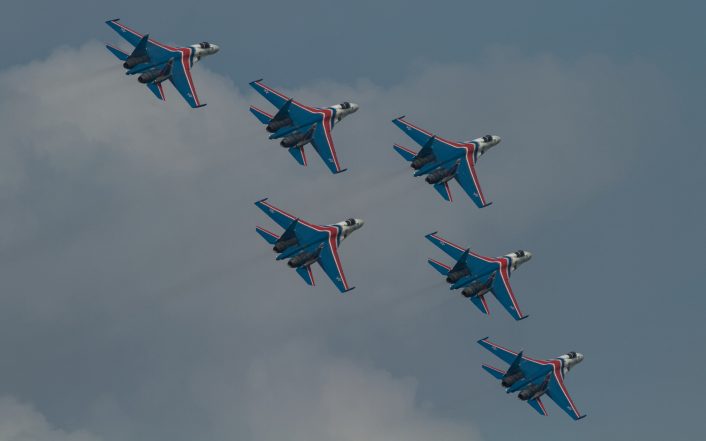
China’s own lineup of Flankers was also impressive, with the J-15T, J-16, J-15D and J-16D all present. These are the four most advanced Flanker variants that the PLA fields, each modified extensively for their roles within the PLAAF and PLAN.
The J-16 multirole strike fighter, a twin-seat variant based on the J-11BS, itself developed from the Su-30MK2, was shown as a ground display aircraft, following previous editions. Equipped with an AESA radar and powered by indigenous WS-10A engines, the J-16 showcased China’s advancements in avionics, materials and weaponry and reflected China’s ability to create a high-performance fighter suited to both air-to-air and air-to-ground missions, albeit based off of a Russian airframe.
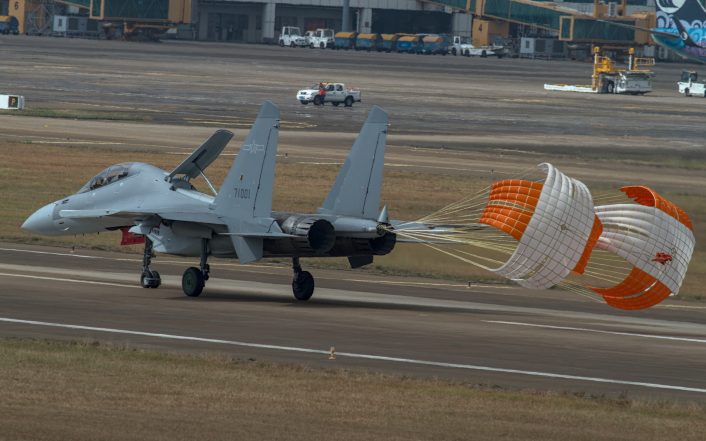
The PLAN’s brand-new CATOBAR J-15T also wowed spectators both on the ground and in the air. Fitted with strengthened landing gear and an AESA, the J-15T is designed for operation on the next generation Type 003 carrier, the Fujian, and is thus designed to utilize the electromagnetic catapult system. As the PLAN expands and improves its carrier strike capabilities and moves from ski-jump carriers to carriers equipped with catapults, the J-15T will form the core of the PLAN fighter force alongside the highly-anticipated J-35 (the naval variant of the aforementioned J-35A). This year’s airshow was the first edition that featured the PLAN’s aircraft, and emphasized the PLAN’s commitment to maintaining a fleet of modern and capable fighters.
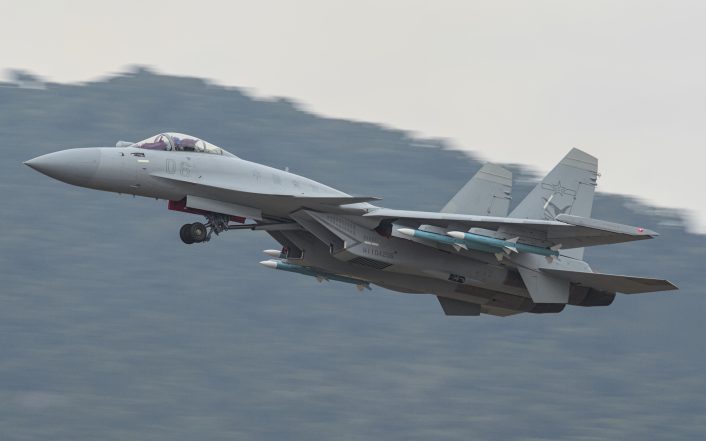
Electronic Warfare (EW) was also a prominent theme, as the specialized EW variants of the abovementioned aircraft, PLAAF’s J-16D and the PLAN’s J-15D, made appearances. The D series of these aircraft are fitted with advanced jamming pods and EW systems, and are designed for the SEAD/DEAD mission set, neutralizing enemy radar and communication systems. The EW focused variants of these modern fighters highlight China’s growing emphasis on EW as a force multiplier, and the criticality of these missions in a contested environment. J-16D was only seen on the ground, allowing visitors an up-close look, while the J-15D was only seen in the flight performance.
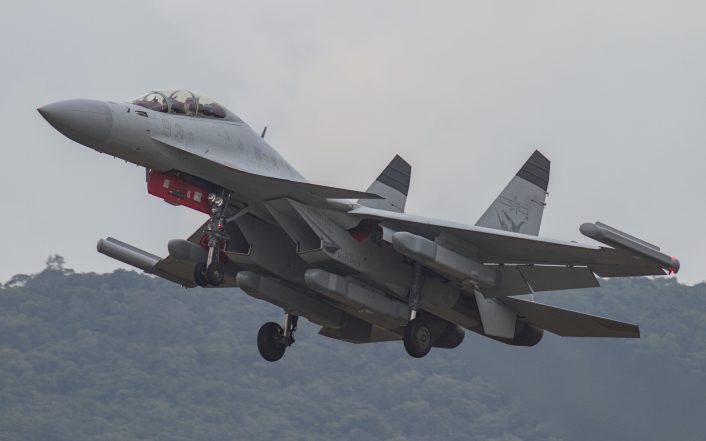
The Flankers also performed flight displays; the J-16 demonstrated its agility in both the slow and high-speed envelope of flight. The J-15T/D also performed a short demo, with three aircraft participating, all in different configurations. A J-15D with six EW pods as well as two J-15Ts, one with four dummy PL-15 missiles and another flying as a buddy tanker, performed a fly-past showcasing the new series of Naval Flankers to the public for the first time. They also performed touch-and-goes, allowing for a closer look at these new aircraft.
Conclusion
The flight display also featured the PLAAF’s August 1st (Ba Yi) and Red Eagles demonstration teams. Ba Yi fly specialized aerobatic variants of the J-10 fighter, the single-seat J-10CY and the twin-seat J-10SY, while the Red Eagles fly the JL-8 trainers. The JL-10, YU-20, PLA/PLAN Helicopters and COMAC C909 and C919 also performed flying demonstrations across the week.
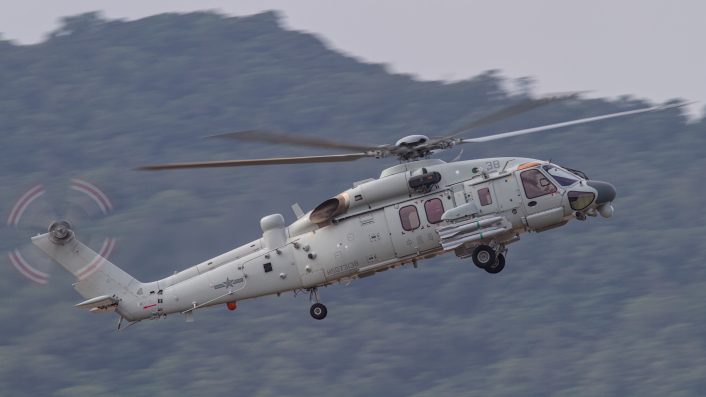
The static display’s lineup was also very extensive, with many of the PLA’s frontline aircraft on display, such as the J-10C, J-15T, H-6K and KQ-200, drones like the Wing Loong series of UAVs, and ground systems like the HQ-19.
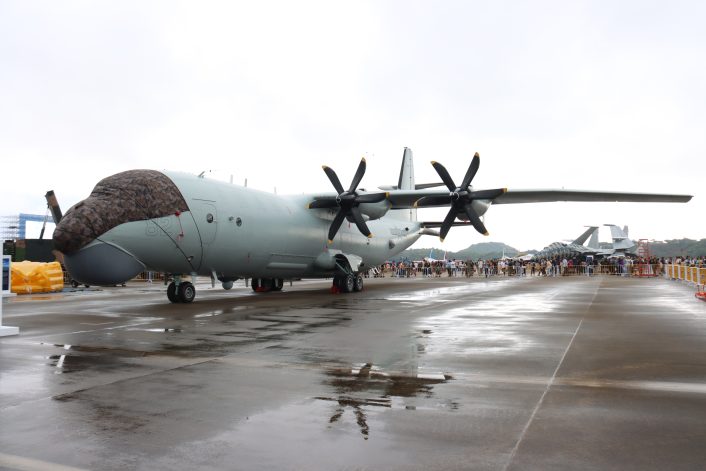
The 15th edition of the China Airshow was significant in many ways; not only was it the first airshow in the world to have three different stealth fighters, but it also was the first public appearance for many new systems such as the J-35A and J-15T.

